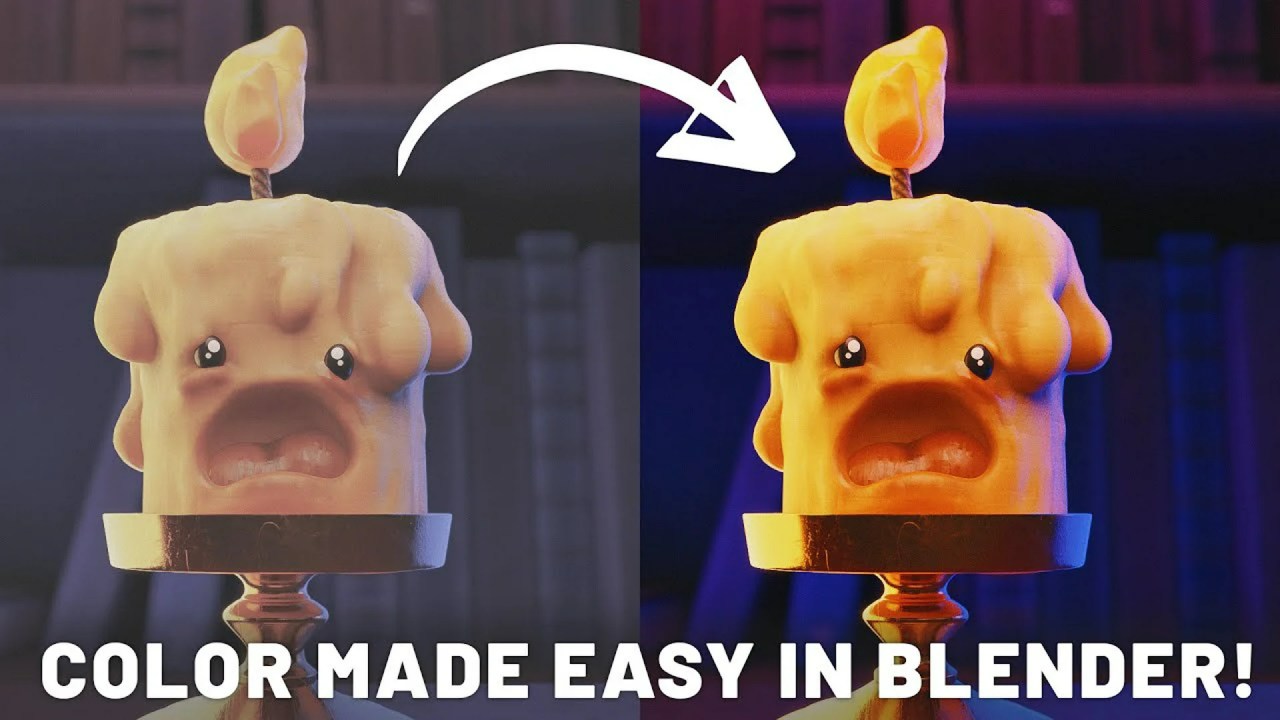Discover how Sweeper3D crafts the stunning ‘Citadel of the Cliffs’ in Blender, leveraging the powerful Arborea asset pack. This guide explores innovative techniques for environment design, from dynamic rock formations to intricate castle building and atmospheric lighting.
Creating breathtaking 3D environments often presents a unique set of challenges, from managing complex assets to achieving realistic lighting. Many artists find themselves grappling with these hurdles, seeking efficient workflows that don’t compromise on visual quality. Enter Sweeper3D, a seasoned environment artist who not only navigates these complexities but also develops tools to simplify them for others. In a recent video, he generously shares his process for creating the majestic ‘Citadel of the Cliffs’ in Blender, offering invaluable insights into his workflow.
This detailed tutorial serves as a practical demonstration of the new cliff and rock assets included in the latest Arborea update, a comprehensive library of premium nature assets and procedural tools designed by Sweeper3D himself. The presentation meticulously covers everything from setting up foreground elements and scattering greenery to constructing an intricate castle and mastering complex lighting. Viewers gain a front-row seat to the creation of a stunning render, witnessing how powerful tools can transform creative visions into reality.
Building the Foundation: Foreground Rocks and Kitbashing
The scene begins by establishing a compelling foreground, expertly avoiding a traditional ground plane. Instead, the artist employs multiple instances of a single rock asset, the versatile “riverbed formation.” Through clever kitbashing — scaling, rotating, and squishing these assets — he crafts diverse and natural-looking terrain. This technique showcases the incredible flexibility of Arborea’s assets, allowing for the rapid creation of varied rock structures, often seamlessly blended with water elements.
Scattering Life: Moss and Greenery with Arborea’s Tools
To breathe life into the rocky landscape, Sweeper3D turns to Arborea’s intuitive scattering system for moss and greenery. He selects a main rock asset as the emitter, applies its rotation and scale, and then scatters the “Irish moss flowering” asset upon it. Crucial adjustments include increasing density, scaling up the moss for a fluffy appearance, randomizing rotation, and utilizing pattern distribution with increased noise scale to achieve patchy, organic growth. The “slope” control is particularly effective, limiting scattering to desired angles. A powerful feature, “add as multi-emitter” (Alt Q), then transfers this system to all other selected rock assets, streamlining the process. He also addresses common issues, such as incorrect scattering on mirrored assets, by simply recalculating normals (Shift N). Further optimizations like “elevation” to cut off moss below the water line and “camera culling” significantly reduce particle count, ensuring smooth performance.
Constructing the Citadel: An Architectural Time-Lapse
The castle construction unfolds through a narrated time-lapse, revealing the artist’s methodical approach. It commences with a main Gothic tower, strategically placed in the distance and centered within the composition. Steep-roofed house models are then added, rotated, and intersected to create roof slants. Utilizing the 3D cursor as a pivot point, the creator rotates duplicated models to achieve symmetrical patterns. A bridge model is quickly projected and extended with an array modifier. Larger building models are scaled and positioned to form the castle’s sides and front, maintaining desired symmetry. For the cylindrical base, a circle curve guides a wall model, filled out using an array modifier combined with a curve modifier. This wall base is duplicated and scaled for additional layers, and new cliff models from Arborea, like “Forest Cliff 01,” are incorporated as a mountaintop foundation, rotated and scaled to blend naturally. Additional buildings and wall pieces fill empty spaces, completing the citadel’s intricate form, often leveraging the 3D cursor for precise, symmetrical arrangements.
Illuminating the Scene: Comprehensive Lighting Strategies
The lighting setup is where the scene truly comes alive. The primary light source is a sky texture node, carefully adjusted for sun intensity, background strength, elevation, and rotation to control the light’s angle and time of day. Altitude and ozone settings fine-tune atmospheric color, while sun size influences shadow sharpness. An orange tint is subtly added to the sky texture’s color. Volumetrics play a crucial role in creating depth: a large cube with a basic white volume scatter node (low density, high anisotropy for sunset scenes) enhances light rays. A second volume at the bottom, using a noise texture and color ramp, generates broken-up, cloudy mist, adding variation. A narrow spotlight, tracked to an empty object, provides a targeted highlight, using a black body texture for precise color temperature. A large sky image plane serves as a background, tracked to the camera and optionally flipped to match scene lighting, with its shader using emission strength and RGB curves for contrast. Finally, a light-blocking cube in the foreground absorbs backlight, darkening the immediate area to create depth and a vignetted effect. Procedural clouds, crafted with a plane and noise texture, cast dynamic shadows, allowing for variable “moody” lighting by adjusting their values. These combined elements culminate in a truly detailed and atmospheric render.
Sweeper3D’s dedication to refining his workflow and creating tools that genuinely solve artists’ frustrations is evident in Arborea. This powerful asset pack, available on Superhive, is built for environment artists, by an environment artist. It offers a growing library of 600+ optimized assets, an intuitive scatter system, and powerful Geometry Node tools like vines, ivy, and snow generators. The inclusion of features such as quick asset import, material adjustment sliders, instant season switching, and camera culling exemplifies a commitment to a fast and flexible creative process. Every purchase of Arborea also includes three months of free access to Sweeper3D.com, offering in-depth tutorials and project files, along with access to the Arborea Discord for support and community engagement.
Whether you are looking to streamline your environment creation, optimize your scenes, or simply elevate the realism and complexity of your digital worlds, Sweeper3D’s approach with Arborea provides a clear pathway. His detailed breakdown of the ‘Citadel of the Cliffs’ project is more than just a tutorial; it is a masterclass in leveraging cutting-edge tools and techniques to achieve truly stunning results, inspiring artists to push the boundaries of their own creative endeavors.



